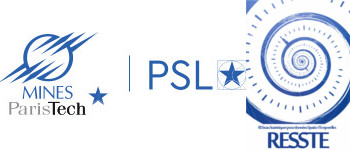Investigating spatial structures is well established for Euclidean spaces where a given spatial direction gets the same meaning all over the study area. This is no longer the case for phenomenon with a strong radial organization like bathymetry around an island or for ecological or environmental studies where the spatial continuity does not reduce to single directions all over the study area but rather follows some curves. In addition, bathymetry is non stationary as depth increases slowly perpendicular to the coast, up to the shelf-edge, from where it drops sharply.
In this paper, we compare two possible ways of dealing with non-Euclidean and non-stationary anisotropies. First, an ad hoc projection is designed to conform itself to the shape of the shelf edge and to the characteristics of the sampling. This conformal projection allows going back and forth between the geographical space and the projected space. After projection, drifts for the moments of order 1 and 2 are fitted on the empirical expected mean and variance of depth per class of distance to the coast in order to derive the depth residual. The conformal projection breaks down the spatial continuity all around the island and ad hoc duplication of data are implemented when interpolating the depth residuals by ordinary kriging before its back transformation. Second, a SPDE formulation with user-defined non-stationary anisotropy is developed and used for generating an SPDE-kriging of the depth residual.
While cross validation does not show much difference between the two approaches, it happens that 20% of relative differences are observed in areas far from samples. To mimic such interpolation configurations, an entire data transect is removed and is re-estimated which shows a better performance with SPDE than with standard kriging.
Depth measurements were collected by echo sounder along transects. The resolution of the echo sounder was such that the number of observations is quite large (n =1 900 000). Therefore numerical issues are a concern and SPDE proves to be very efficient in this respect.

 PDF version
PDF version
